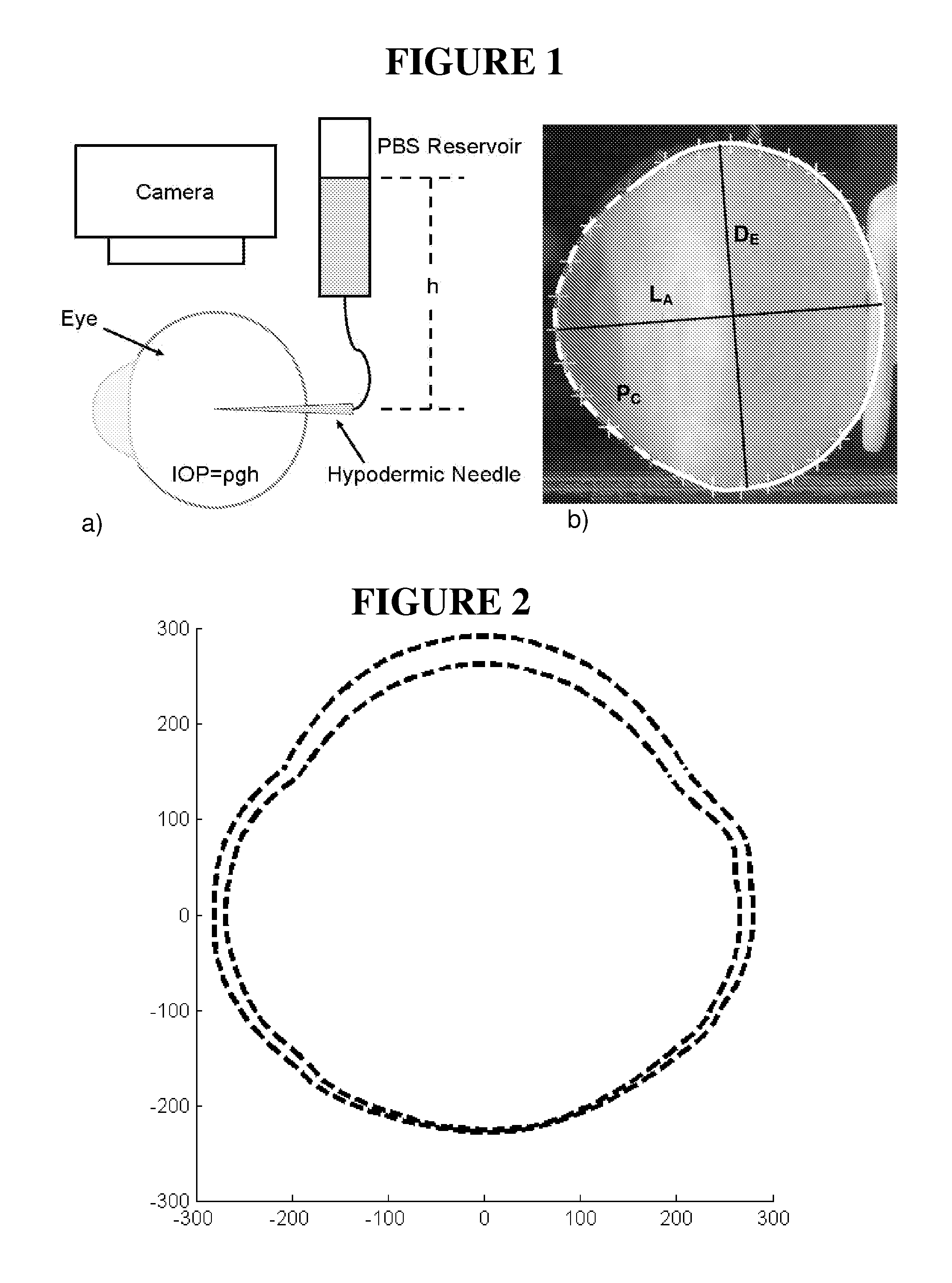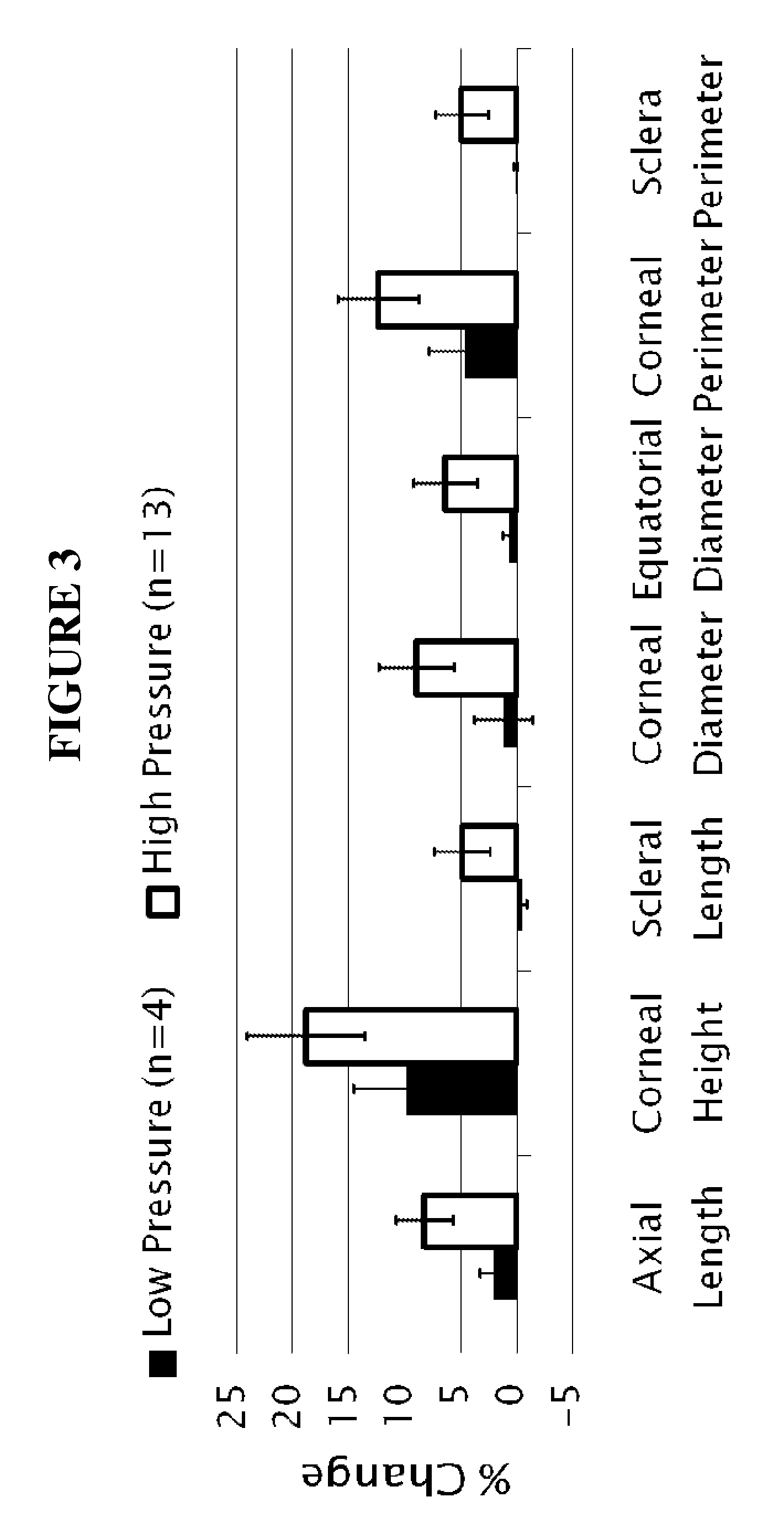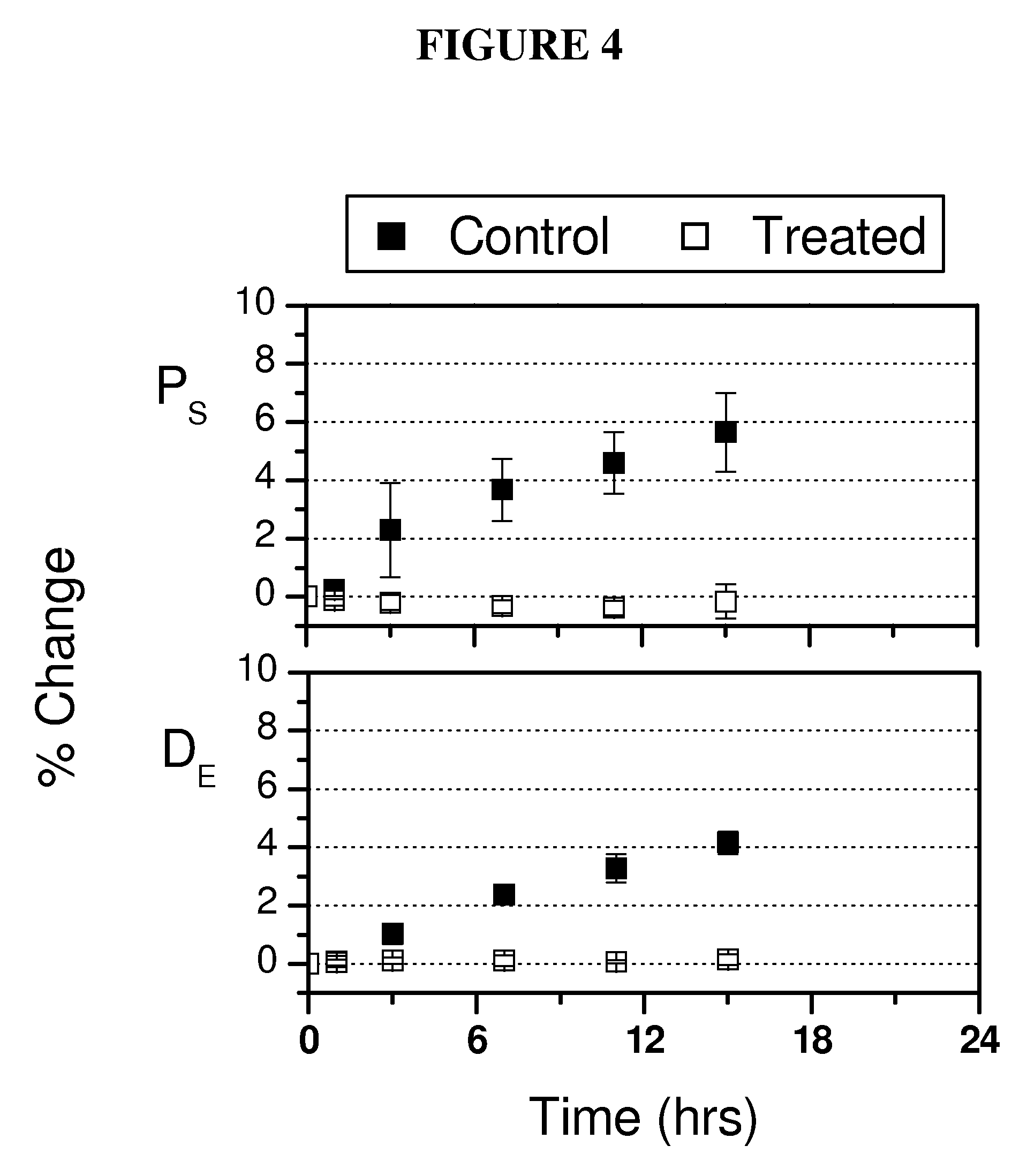Photochemical therapy to affect mechanical and/or chemical properties of body tissue
a photochemical therapy and chemical technology, applied in the field of ocular medicine, can solve the problems of increased astigmatism, myopia, and higher-order aberrations that become difficult to correct by spectacles or contact lenses, and achieve the effect of reducing the risk of post-operative corneal deformation and treating or reducing the risk of ocular deformation
- Summary
- Abstract
- Description
- Claims
- Application Information
AI Technical Summary
Benefits of technology
Problems solved by technology
Method used
Image
Examples
example 1
Poly(ethylene-glycol)dimethacrylate (PEGDM) Polymerization Using Eosin Y / TEOA Photoinitiation
[0172]Following the teachings of U.S. Published Application No. 20050271590, the Inventors Eosin Y / TEOA as an alternative photoinitiator of PEGDM crosslinking for reinforcement of scleral tissues. It was surprisingly discovered that Eosin Y / TEOA was comparably effective in the absence of a target crosslinking chemical (e.g. PEGDM) for enhancing the strength of scleral tissues. It was particularly unexpected that a Type II photoinitiator was capable of strengthening the sclera to a therapeutically useful degree with illumination periods of approximately 30 minutes or less. Without intending to be bound by the theory, it is believed that Eosin Y may sufficiently promote the direct crosslinking of collagen and other scleral components to enhance the strength of scleral tissue directly. While this dose not preclude the co-use of crosslinking chemicals such as PEGDM, the results with Eosin Y sugg...
example 2
Dose Response and Mechanical Properties of Treated Tissue
[0173]A number of different techniques were used to initially evaluate scleral tissue strengthening including tensile tests, oscillatory shear measurements and the eye expansion assay discussed more fully below.
[0174]The ability of initiator with or without crosslinking compounds to strengthen the sclera was initially evaluated using rheometric analysis of tissue sections. Sclera sections (8 mm diameter) were cut from porcine eyes and tested on a TA Instruments AR1000 rheometer (using a cleated parallel plate geometry) to quantify changes in modulus pre- and post-treatment. Two example photoinitiators were selected for initial evaluation. IRGACURE® 2959 (2-hydroxy-1-[4-(2-hydroxyethoxy)phenyl]-2-methyl-1-propanone) and Eosin Y with triethanolamine (Eosin Y / TEOA). IRGACURE® 2959 (12959) is a UV light activated photoinitiator that has shown low toxicity in cell encapsulation studies. Eosin Y / TEOA was selected as an example photo...
example 3
Ocular Shape in Inflation Model of Myopia and Keratoconous
[0175]Stabilization of ocular shape is evaluated in vitro using pairs of enucleated eyes from young (˜1-2 weeks) New Zealand White Rabbits, one eye treated and the fellow eye as control. To mimic and accelerate aspects of the loading geometry present in vivo, the intact globes are mechanically tested by imposing an elevated intraocular pressure: a syringe connects the intraocular fluid to an elevated reservoir of Dulbecco's phosphate buffered saline (DPBS) while the exterior of the eye is immersed in DPBS at ambient pressure (FIG. 1). Enucleated eyes from young rabbits provide a model of distensible corneal and scleral tissue: when subjected to elevated intraocular pressure in vitro, the cornea progressively bulges outward and the scleral wall expands (FIGS. 2 and 3).
[0176]The size and shape of the globes are simultaneously recorded from two orthogonal perspectives over time. To prepare eyes for the tests, the epithelium is o...
PUM
 Login to View More
Login to View More Abstract
Description
Claims
Application Information
 Login to View More
Login to View More - R&D
- Intellectual Property
- Life Sciences
- Materials
- Tech Scout
- Unparalleled Data Quality
- Higher Quality Content
- 60% Fewer Hallucinations
Browse by: Latest US Patents, China's latest patents, Technical Efficacy Thesaurus, Application Domain, Technology Topic, Popular Technical Reports.
© 2025 PatSnap. All rights reserved.Legal|Privacy policy|Modern Slavery Act Transparency Statement|Sitemap|About US| Contact US: help@patsnap.com



